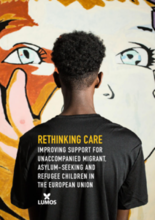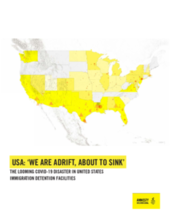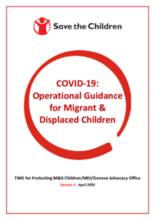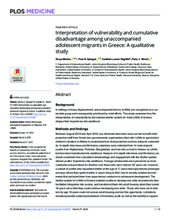Displaying 221 - 230 of 836
Based on the life history theory and the interpersonal function model of non-suicidal injury (NSSI), this study aimed to examine the positive impact of loneliness on friendship quality via NSSI among left-behind adolescents.
This report maps and assesses the forms of care provided to unaccompanied migrant, asylum-seeking and refugee children in six European Union Member States: Bulgaria, France, Italy, Greece, the Netherlands and Spain.
In this blog post, Anna Riatti - coordinator of the UNICEF Refugee and Migrant Response in Italy - describes how UNICEF is supporting refugee and migrant children in Italy in light of the COVID-19 crisis.
This report from Amnesty International outlines the "reckless response" of U.S. Immigration and Customs Enforcement (ICE) to the COVID-19 crisis, which threatens public health, and calls for the release of immigration detainees.
This document provides programme guidance across numerous migrants and displaced (M&D) children contexts.
This study examines how the interpretation of vulnerability by the national shelter system for male UAMs in Greece shapes their trajectories into adulthood.
The present research contains two studies: in Study 1 the authors compared prosocial behavior between emerging adults with left-behind experience (EA-LB) and their non-left-behind counterparts; in Study 2, the authors, adopting a sub-sample of Study 1, examined the direct and interactive effects of parental autonomy support, mindfulness, and gender on prosocial behavior in EA-LB.
This study examines the psychosocial impact of rural-to-urban migration on youth in China, a fast-urbanizing country with 268 million rural migrant workers and 103 million migrant youth. Using data from 2012 China Family Panel Studies (n = 2084, age 10–15), this study examines psychosocial disparities (depressive symptoms, social relationships, and future aspirations) among youth migrated with parents, youth left behind by migrant parents, and their peers.
This paper aims to provide a better understanding of the impact of parental migration on the welfare of left-behind children in the Philippines so that policies can be devised to support them.
In the present study, six unaccompanied asylum‐seeking minors (UASMs) were interviewed and interpretative phenomenological analysis (IPA) was used as a methodology to analyse the data.





